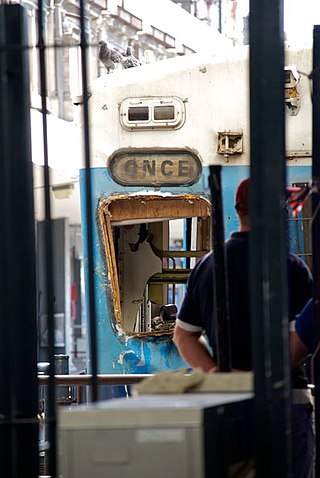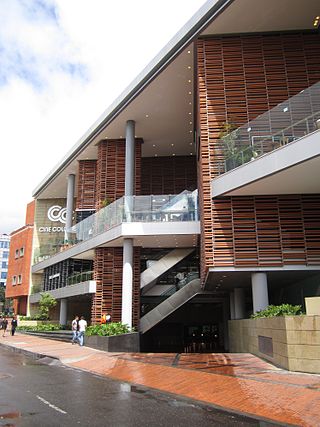
Pedro Alonso López, also known as The Monster of the Andes, is a Colombian serial killer, child rapist, and fugitive who murdered a minimum of 110 people, mostly young women and girls, from 1969 to 1980. López claimed to have murdered over 300 people. He is considered by many as one of the most prolific serial killers and rapists in history.
Alberto Santofimio Botero is a Colombian politician, a member of the Colombian Liberal Party.

On August 25, 2011, members of drug cartel Los Zetas set a casino on fire in Monterrey, Nuevo León, Mexico, killing 52 people.

The 2012 Buenos Aires rail disaster, also known as the Once Tragedy, occurred on 22 February 2012, when a train crashed at Once Station in the Balvanera neighbourhood of Buenos Aires, Argentina.

A gas explosion caused by a large gas leak occurred in a residential area of Rosario, the third-largest city in Argentina, on August 6, 2013. A nearby building collapsed, and others were at high risk of structural failure. Twenty-two people died, and sixty were injured. Several organizations helped secure the area, search for survivors and aid people who lost their homes. Shortly after the explosion, the time needed for reconstruction was estimated at six months.

On the afternoon of 17 August 2017, 22-year-old Younes Abouyaaqoub drove a van into pedestrians on La Rambla street in Barcelona, Catalonia, Spain killing 13 people and injuring at least 130 others, one of whom died 10 days later on 27 August. Abouyaaqoub fled the attack on foot, then killed another person in order to steal the victim's car to make his escape.

The El Paraíso stampede was a stampede of more than 500 people that occurred in the early-morning hours of 16 June 2018 at the El Paraíso Social Club, also known as Los Cotorros Club, in the El Paraíso urbanization in Caracas, Venezuela. The stampede was the result of a tear gas canister being detonated during a brawl among a group of students from different schools celebrating their proms. At least 19 people died, and according to official police reports, they were caused by asphyxia and polytrauma.
On 10 February 2018, an explosion occurred in the afternoon of the Bolivian city of Oruro during the traditional carnival of the city. In a street food stand, eight people were killed by an explosion near the main street of Oruro. At first it was thought that it was the explosion of a gas canister due to mishandling, but not finding fragments of the alleged canister or a gas leak that caused it, the government has discarded this theory. It also left more than forty people injured.

The Andino Mall bombing happened on the afternoon of 17 June 2017 in Bogotá, Colombia. Three young women were killed and 9 other people were injured. One of those killed was French; the other two were Colombian. The two Colombians died in the hospital due to their injuries. The bomb exploded behind a toilet bowl of the second floor women's bathroom at approximately 5 pm.
On 18 January 2019, a pipeline transporting gasoline exploded in the town of Tlahuelilpan, in the Mexican state of Hidalgo. The blast killed at least 137 people and injured dozens more. Mexican authorities blamed fuel thieves, who had illegally tapped the pipeline. The explosion was particularly deadly because large crowds of people had gathered at the scene to steal fuel. Security forces tried to persuade people to move away from the scene, but they were outnumbered and asked not to engage with civilians for fear of causing a violent confrontation. The leak was reported at 17:04 CST (23:04 UTC), and the explosion occurred two hours later at 19:10. It took about four hours for responders to extinguish the fire.

On January 23, 2020, a gas leak from a truck transporting liquefied petroleum gas caused an explosion in Villa El Salvador, Lima metropolitan area, Peru. The subsequent fires affected at least 20 homes and several vehicles.

Karoll Iván Márquez Mendoza, is a Colombian actor and singer, known for his starring role in the Caracol Televisión soap opera Oye bonita. He is also known for his roles in Un sueño llamado salsa (2010) and Amor de Carnaval (2012).
Ana Cristina Botero Cadavid, is a Colombian actress, mainly active in the world of television, but also with participation in some Colombian plays and films.
Jorge Iván Agudelo is a Colombian human rights activist, open water swimmer and a graphic designer. He is currently the first Colombian to cross swimming Santa Catalina channel and the Kaiwi Channel.









